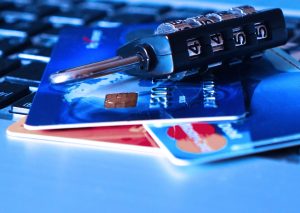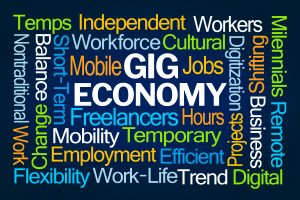
by admin | Aug 22, 2019 | Hot Topics
 There’s no denying that summer has arrived. In fact, the news has been abuzz with Alaska’s heat wave in July that sent temperatures soaring between 20 and 30 degrees above average. When you are caught in the middle of a heat wave, it may seem like there’s nothing you can do to keep cool. But, there are ways for you to beat the heat this summer and stay safe from heat related illnesses.
There’s no denying that summer has arrived. In fact, the news has been abuzz with Alaska’s heat wave in July that sent temperatures soaring between 20 and 30 degrees above average. When you are caught in the middle of a heat wave, it may seem like there’s nothing you can do to keep cool. But, there are ways for you to beat the heat this summer and stay safe from heat related illnesses.
Avoid the Heat
It may seem like a no-brainer to avoid the heat to prevent a heat related illness but some professions work solely outdoors. In those cases, there aren’t many options for avoiding the heat. Be aware of the hottest time of day and limit physical activity outside during that time.
Reduce Activity Levels
Plan the most active job of the day to be in the morning when the sun and heat aren’t as intense. Heatstroke can occur when a person engages in strenuous activity for long periods of time in the heat. If possible, arrange workflows to include times of rest and times to visit a cooling station.
Drink Fluids Regularly
The underlying factor in most heat related illness is the inadequate supply of fluids for your body, in other words, drink more water! Heavy sweating depletes a person’s body of fluid and salt and this in turn can cause heat cramps and heat exhaustion. If this occurs, drink cool water or an electrolyte-replacement beverage like Gatorade. To prevent these two illnesses, drink plenty of water before you know you will be outside in the heat so that your body has sufficient fluids in reserve.
Have a Buddy System
When you know you will working outside or even playing outside in the heat of the day, make sure you have someone with you. If you should experience a heat related illness while alone, there would be no one available to offer first aid or call for help. As in the case of heatstroke, confusion and weakness along with fainting and possibly convulsions could occur. These are all series symptoms and require immediate action for treatment. The buddy system gives you a safety net of someone else who can recognize these symptoms and can act to save them.
Take a Dip!
The best way to beat the heat is by cooling off your body. Not everyone has access to a pool when spending time outside in the heat so if that’s the case, use cold compresses or ice and ice packs to lower body temperature. You can also remove excess clothing and spray your body with cool water. If you do have someone with you and you are experiencing a heat related illness, make sure they are watching you if you jump into a pool.
By following these easy tips to beat the heat you can safely be outside when temperatures are at their peak. Enjoy your summer and stay cool!

by admin | Jul 11, 2019 | Employee Benefits, Group Benefit Plans
 Recently, the “Happiest Place on Earth” wasn’t living up to its name for many families. For almost a full year, malicious software had been installed on point-of-sale systems at several Earl Enterprises restaurants. This software then captured debit and credit card numbers, expiration dates, and cardholder names of users purchasing food at these venues. Identity theft has become too commonplace in our day and age and we need to become better educated on where we are most likely to encounter threats as well as ways to avoid becoming victims.
Recently, the “Happiest Place on Earth” wasn’t living up to its name for many families. For almost a full year, malicious software had been installed on point-of-sale systems at several Earl Enterprises restaurants. This software then captured debit and credit card numbers, expiration dates, and cardholder names of users purchasing food at these venues. Identity theft has become too commonplace in our day and age and we need to become better educated on where we are most likely to encounter threats as well as ways to avoid becoming victims.
How many people are truly affected by identity theft? According to IdentityForce.com, here are some basic numbers:
- In 2017, 6.64 percent of consumers became victims of identity fraud, or about 1 in 15 people
- That equals 16.7 million victims last year, an increase of 1 million from 2016
- Over 1 million children in the U.S. were victims of identity theft in 2017, costing families $540 million in out-of-pocket expenses
- There’s a new victim of identity theft every 2 seconds
- Identity theft is one of the most common consequences of data breaches, as 31.7 percent of breach victims experienced ID theft
- There were 1,579 data breaches exposing 179 million records last year
- It takes most victims of identity theft 3 months to find out what’s happening, but 16 percent don’t find out for 3 years
How do you protect yourself from identity theft? Experts agree that there are several basic steps to take to help prevent theft from happening.
CHANGE PASSWORDS REGULARLY
If you are anything like me, you frequently forget the passwords you have for the numerous online accounts you manage. One way to manage those passwords, and help you remember to change them, is an online password manager like LastPass. Enter the passwords into this secure account and then you’ll just need to remember one password to access them all. Was there a security breach at your gym? Just log on to LastPass and in one click, you can have a new password for your account and can go along with your day.
AVOID PUTTING PERSONAL INFO ON SOCIAL MEDIA
In an era of “over-sharing” you must be cautious about giving away personal information on your social media accounts. Thieves are smart and can mine your accounts for information. When you post about being out on vacation, you open the door for thieves to come rob your home. The same holds true for identity theft. Be careful about posting sensitive information online like maiden name, age, birthday—even your high school! All it takes is one crafty thief to take the background info you’ve posted on social media and open a new credit card in your name. Use caution when you share this sensitive information online.
CHECK YOUR ACCOUNTS REGULARLY
Gone are the days of getting a bank statement in the mail every month that you reconcile with your checking account ledger. With almost all of our banking transactions occurring online, many people never check the detailed statements for their accounts. This is exactly what the identity thieves want to happen. Check your bank statements for transactions you didn’t make, medical bills for care you didn’t receive, and credit card statements for cards you do not have. Also, make it a practice to check each of your three credit reports at least once a year—and the best part is that this is free for you to use!
ID THEFT INSURANCE
One last way to protect yourself against identity theft is to enroll in ID Theft Insurance. While ID Theft Insurance does not protect against the actual monetary theft, it does cover the costs you, as the victim, will incur while rebuilding your identity. The coverage may include:
- Phone call and photocopying charges
- Postage fees for mailing documents
- Salary loss due to uncompensated time away from work while repairing one’s identity
- Legal fees
- Access to a fraud specialist who can assist in restoring good credit and protecting one’s identity again
- Help with preparing documents, filing police reports and creating a fraud victim affidavit
Taking these steps will help protect you and your family from identity theft. While it doesn’t guarantee you will be protected all the time, it does make it harder for the thieves to gain access to your protected information—and this can make your identity stay in a happy place—with you!

by admin | Jul 2, 2019 | Benefit Management, Human Resources
 By now you’ve heard of the term “gig economy” but you may not know what it means. Is it describing the economy of musicians as they work gigs? Does it mean something about computers and the measurement of space allotted for their programs? Does it have something to do with fishing? Well, not exactly. But, have no fear! We will break this term down into easy bites and you’ll be an expert on the gig economy in no time.
By now you’ve heard of the term “gig economy” but you may not know what it means. Is it describing the economy of musicians as they work gigs? Does it mean something about computers and the measurement of space allotted for their programs? Does it have something to do with fishing? Well, not exactly. But, have no fear! We will break this term down into easy bites and you’ll be an expert on the gig economy in no time.
What IS the Gig Economy?
The term “gig economy” refers to the new landscape of employment in the world where workers are hired for temporary, flexible jobs instead of full-time permanent positions. Think of it this way: workers in a gig economy are paid for completing a job in a predetermined timeframe—like musicians are paid for a night of music (a gig) at a venue. In a gig economy, you see that independent contractors and freelancers tend to be hired over the more traditional, full-time job seekers. Examples of jobs that thrive in this economy are technology-based positions, creative jobs, and the new tide of service-based positions in companies like Uber, Airbnb, and Instacart.
Gig Economy Numbers
Forbes magazine reports that according to the 2018 numbers from the Bureau of Labor Statistics, there are 55 million people in the US classified as gig workers. This is a huge number! In fact, that translates to more than 35% of the current US workforce. Projected to rise to 42% in 2020, over 40% of these workers are estimated to be millennials. As those numbers increase, the proportion of male to female workers shifts. Once right at 50/50, the new ratio is 60/40. This is attributed to larger numbers of women returning to school for postsecondary education. In fact, many leave the workforce completely to return to school versus taking courses and working at the same time.
Pros of Gig Economy Jobs
There are many pros to a job in this category. Job seekers who are looking for gig economy positions name flexible workplaces and flexible hours as their top priorities. The shift to remote offices as well as the freedom to work at whatever hours are most convenient definitely supports this new economy. Employees who have the discipline to manage their workflow and complete tasks on time are ones that will thrive in a gig job. The positives are not limited to just the employees, though. Employers like being able to choose new hires from a much larger pool of candidates because they are not tied down to job seekers in their immediate vicinity. Employers are also able to save money as they do not have to invest in work equipment, health benefits, or on-going training for these independent workers.
Cons of Gig Economy Jobs
The cons of gig work are some of the flip sides to the pros of gig work. These drawbacks include the absence of health benefits and 401k benefits. Freelancers have to buy their own healthcare and figure out their own savings schedule for retirement—both of which aren’t impossible, but they do take up time and tend to be at a greater expense than the benefits offered in a traditional work environment. Gig workers also face the reality of no paid sick days or vacation days. If a freelancer has the flu, he isn’t paid for the time he misses from work and his deadline isn’t adjusted in this task-based economy. On the employer side of the equation, companies report that the pool of qualified candidates for higher level management positions continues to get smaller as the trend for gig workers who freelance from job-to-job increases
The workplace continues to evolve from a traditional 9-5 workday in a traditional office environment to one that is a flexible work cycle in an ever-changing location. Employees place high priority on setting their own rhythm for work flow and prize independence. Employers are encouraged to stay in-tune with the gig economy and to seek ways to marry their company’s needs with the needs of this new workforce population. Both employer and employee can benefit from this new work landscape.

 There’s no denying that summer has arrived. In fact, the news has been abuzz with Alaska’s heat wave in July that sent temperatures soaring between 20 and 30 degrees above average. When you are caught in the middle of a heat wave, it may seem like there’s nothing you can do to keep cool. But, there are ways for you to beat the heat this summer and stay safe from heat related illnesses.
There’s no denying that summer has arrived. In fact, the news has been abuzz with Alaska’s heat wave in July that sent temperatures soaring between 20 and 30 degrees above average. When you are caught in the middle of a heat wave, it may seem like there’s nothing you can do to keep cool. But, there are ways for you to beat the heat this summer and stay safe from heat related illnesses.

